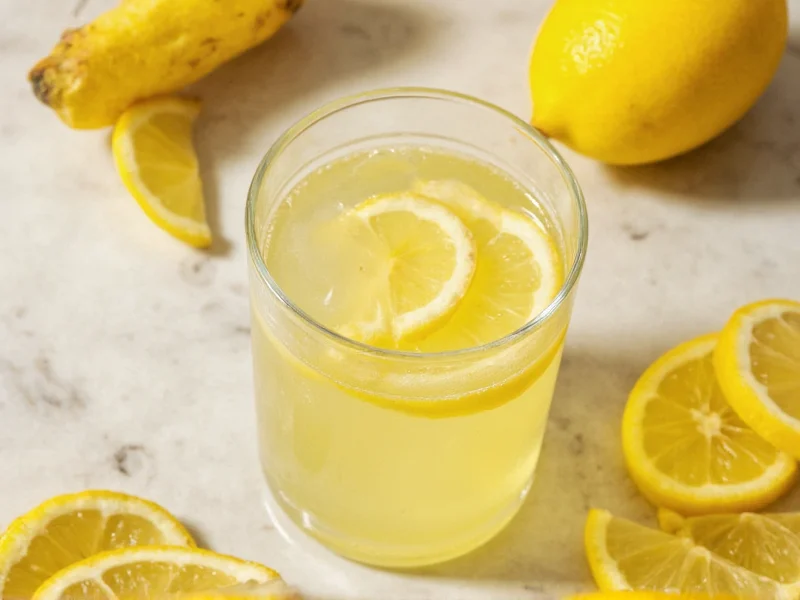When you're in the middle of a recipe and realize you're out of lemons, knowing how to substitute citric acid for lemon juice becomes invaluable. This common kitchen dilemma affects home cooks, professional chefs, and food preservers alike. Understanding the precise conversion and limitations of this substitution can save your recipe while maintaining proper acidity levels.
The Science Behind Citric Acid and Lemon Juice
Lemon juice naturally contains approximately 5-6% citric acid by weight, which gives it its characteristic tartness. Pure citric acid is a crystalline powder that provides concentrated acidity without the additional flavors, sugars, and water found in fresh lemon juice. When substituting, you're essentially replacing the primary acid component while losing the nuanced flavor profile of whole citrus.
Precise Conversion Guide for Substitution
Getting the measurements right is crucial for food safety in canning and proper chemical reactions in baking. Here's the exact conversion you need:
| Lemon Juice | Citric Acid | Water to Dissolve |
|---|---|---|
| 1 tablespoon | 1/8 teaspoon | 1 tablespoon |
| 1/4 cup (2 fl oz) | 1/8 teaspoon | 2 tablespoons |
| 1/2 cup (4 fl oz) | 1/4 teaspoon | 3 tablespoons |
| 1 cup (8 fl oz) | 1/2 teaspoon | 1/4 cup |
Always dissolve citric acid in a small amount of warm water before incorporating it into your recipe. This ensures even distribution and prevents concentrated pockets of acid that could affect texture or taste.
When Citric Acid Works Best as a Substitute
Citric acid shines as a lemon juice replacement in specific applications where pure acidity matters more than flavor complexity:
- Canning and food preservation - Provides consistent, reliable acidity for safe preservation without altering flavor profiles
- Clear beverages - Won't cloud drinks like lemon juice sometimes does
- Chemical reactions in baking - Activates baking soda reliably in recipes like club soda or certain cakes
- Water bath canning - Helps maintain proper pH levels for safe preservation of high-acid foods
- Homemade sour mixes - When combined with other flavor components for consistent tartness
Limitations of Citric Acid Substitution
Understanding when not to substitute citric acid is just as important as knowing how to use it. Avoid this substitution when:
- The lemon flavor is central to the dish (lemon bars, lemon meringue pie)
- Recipes rely on the liquid volume of lemon juice for texture
- Creating emulsions where lemon juice's natural compounds help stabilize mixtures
- Recipes specify "freshly squeezed" lemon juice for optimal flavor compounds
- When making dishes where the subtle sweetness of lemon balances other flavors
Adjusting Recipes for Successful Substitution
When substituting citric acid for lemon juice, consider these adjustments for best results:
- Compensate for missing liquid - Add the water used to dissolve the citric acid plus any additional liquid the recipe would have gotten from lemon juice
- Enhance flavor complexity - Add a tiny pinch of lemon zest or a few drops of lemon extract to recipes where flavor matters
- Balance sweetness - Since citric acid lacks lemon's natural sugars, you may need to adjust sweeteners slightly
- Consider timing - Add dissolved citric acid later in the cooking process to preserve its bright acidity
- Test as you go - Especially in delicate recipes, taste and adjust acidity gradually
Storage and Shelf Life Considerations
Citric acid offers significant advantages over fresh lemon juice in terms of shelf stability. Properly stored in an airtight container away from moisture, citric acid remains effective for years. This makes it an excellent pantry staple for canning season or when fresh citrus isn't available. Unlike bottled lemon juice, which degrades over time, citric acid maintains consistent acidity levels, providing reliable results in preservation applications.
Common Mistakes to Avoid
Even experienced cooks make these errors when substituting citric acid for lemon juice:
- Using too much - Citric acid is more concentrated than lemon juice, leading to overly acidic results
- Not dissolving properly - Adding powder directly can create bitter pockets in your recipe
- Ignoring flavor implications - Expecting identical taste results in recipes where lemon flavor matters
- Substituting in all applications - Using citric acid in recipes specifically designed for fresh lemon's complex chemistry
- Misunderstanding pH requirements - In canning, not verifying final pH levels when substituting acids
Special Considerations for Canning and Preservation
For home canners, substituting citric acid for lemon juice requires special attention. The National Center for Home Food Preservation recommends citric acid as an acceptable alternative to lemon juice in tomato preservation because it provides consistent acidity without diluting flavor. When canning tomatoes, use 1/4 teaspoon citric acid per pint or 1/2 teaspoon per quart to achieve the necessary pH level below 4.6 for safe water bath canning. This precise measurement ensures food safety while maintaining optimal flavor compared to using vinegar, which would alter taste more significantly.











 浙公网安备
33010002000092号
浙公网安备
33010002000092号 浙B2-20120091-4
浙B2-20120091-4